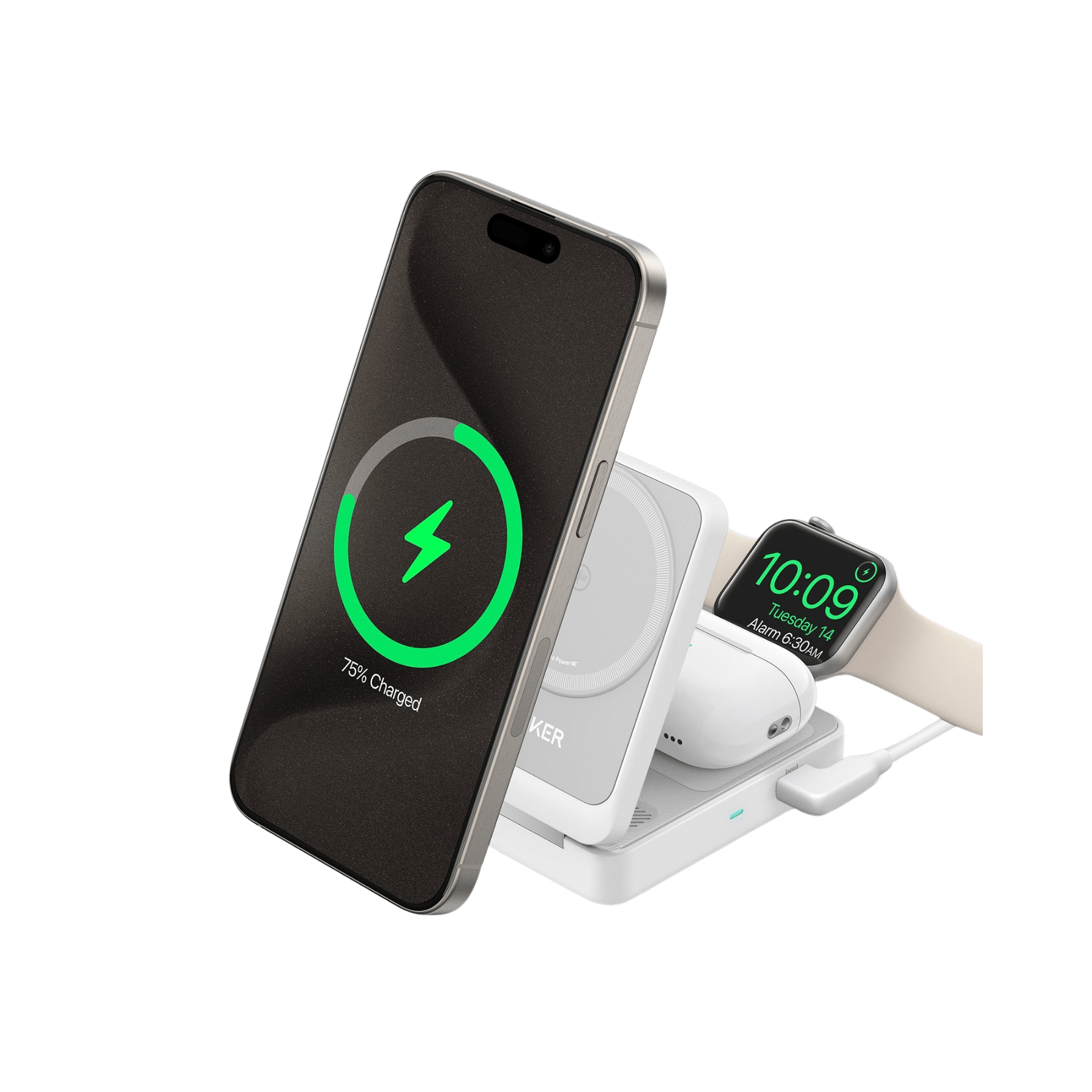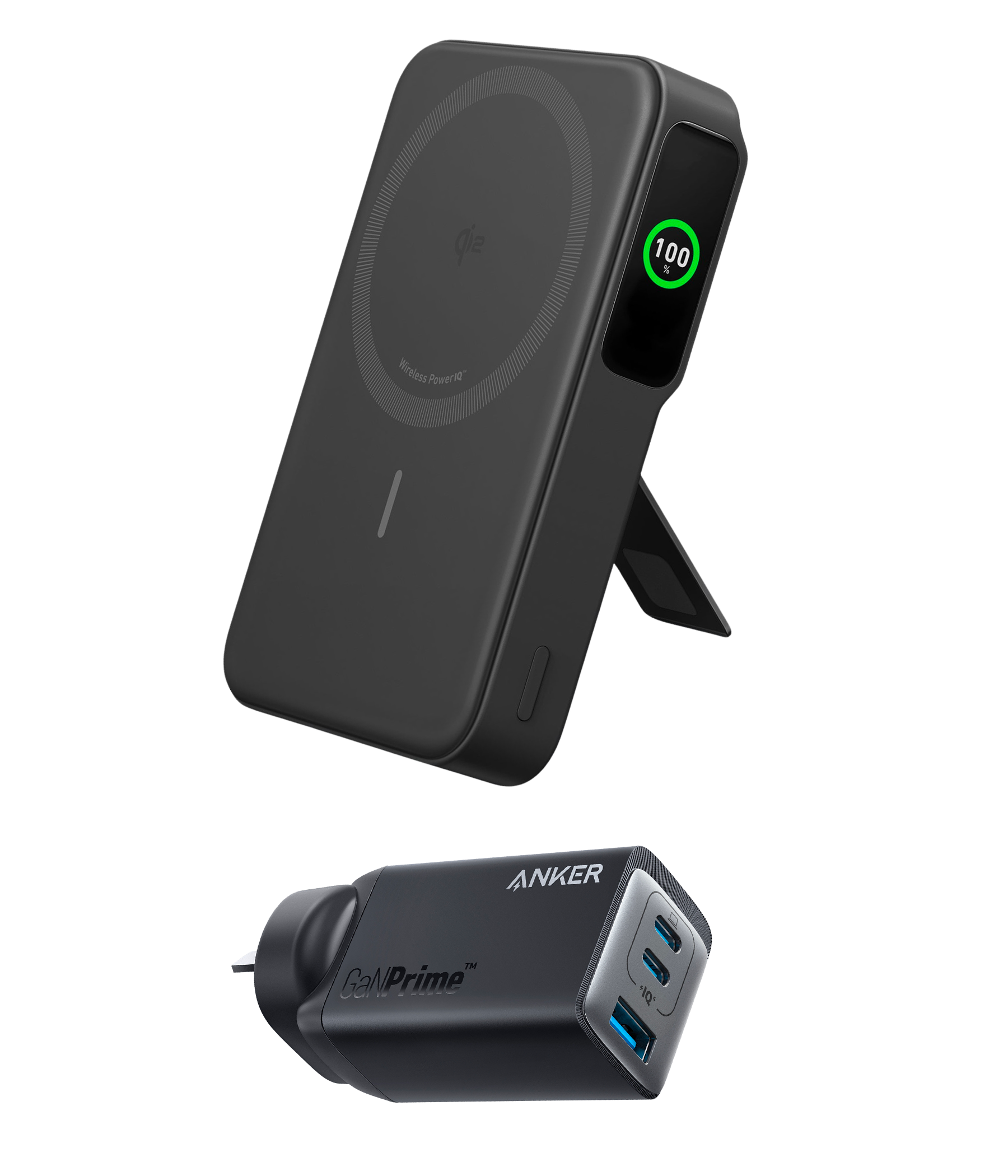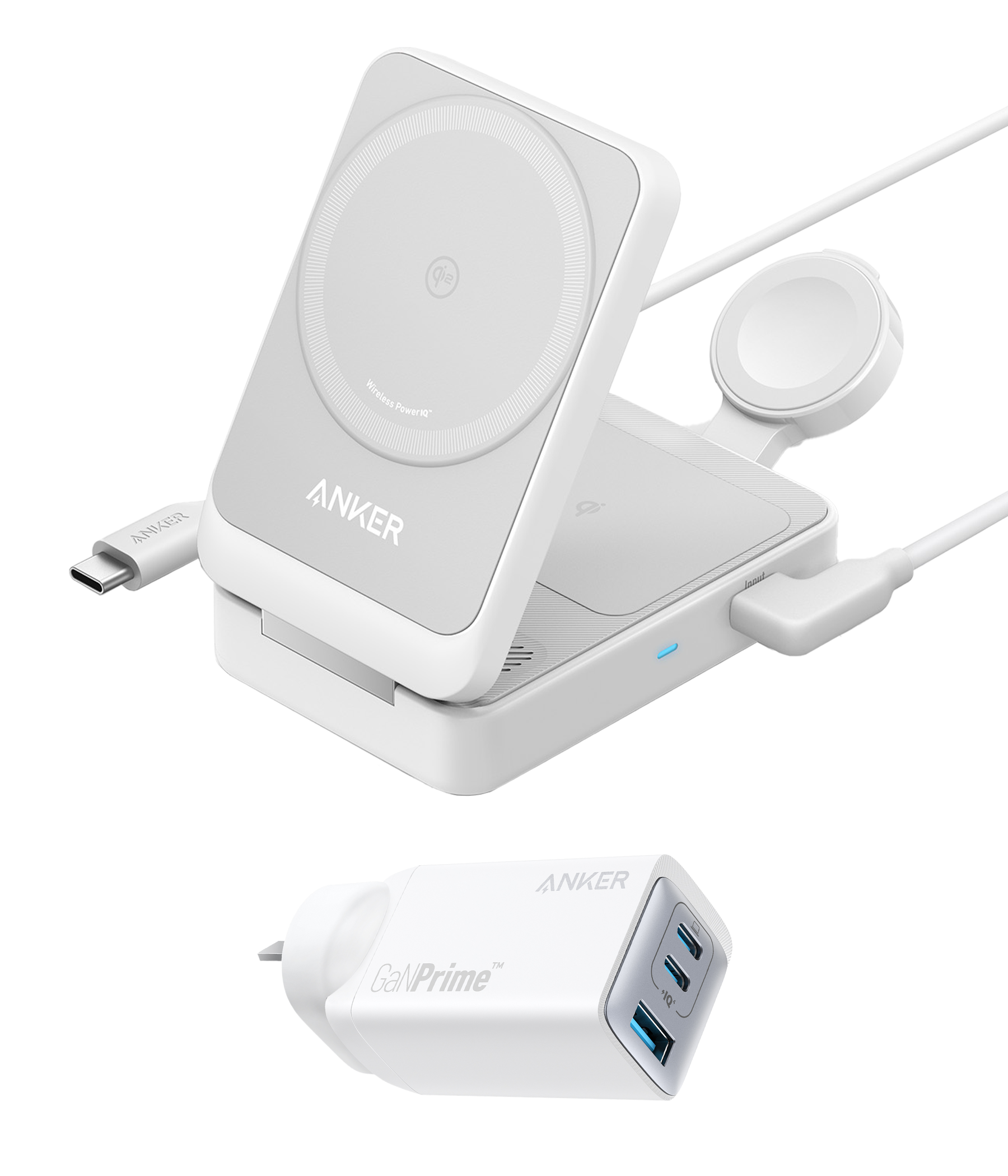
Filter

Recommend
Anker 3-in-1 Charging MagSafe Cube (for iPhone, Airpods and Apple Watch)
$229.95

Hot
Anker MagGo Wireless Charging Station (Foldable 3-in-1)
$249.95

Hot
Anker MagGo Power Bank (6.6K,15W)
$129.95

Anker 633 Magnetic Battery (10k, Built-in Stand)
$89.95

Anker 622 Magnetic Battery (MagGo)
$79.99

Anker 610 Magnetic Phone Grip (MagGo)
$39.99

Anker 737 Charger (GaNPrime 120W) and Anker 633 Magnetic Battery
$279.99

Anker for Magsafe Powerbank, 321 MagGo Battery (PowerCore Magnetic), 5,000mAh Magnetic Wireless Portable Charger
$49.99

Recommend
Anker MagGo Wireless Charging Station (3-in-1 Stand)
$199.95

Recommend
Anker 3-in-1 MagGo Wireless Charging Station (for iPhone, Airpods and Apple Watch)
$199.99

New Release
Anker MagGo Power Bank (10K) and Anker 735 Charger (GaNPrime 65W)
$249.95

Anker MagGo Wireless Charging Station (Foldable 3-in-1) and Anker 735 Charger (GaNPrime 65W)
$359.90

Anker 3-in-1 Cube with MagSafe and Anker 735 Charger (GaNPrime 65W)
$329.95

Anker 3-in-1 Cube with MagSafe and Anker 765 USB-C to USB-C Cable (140W Nylon)
$299.95

Hot
Anker MagGo Power Bank (10K, Built-in-Stand & Smart Display)
$149.95

New Release
Anker MagGo Wireless Charging Station (3-in-1 Stand) and Anker MagGo Power Bank (10K,15W)
$349.90

New Release
Anker MagGo Wireless Charging Station (3-in-1 Pad) and Anker MagGo Power Bank (10K)
$349.90

Anker MagGo Magnetic Case
$29.95
FAQ About Magnetic Chargers
Why Choose a Magnetic Charger?
Magnetic chargers simplify and enhance the wireless charging experience. By using magnets, these chargers ensure perfect alignment between your device and the charger, eliminating the common issues of misplacement found with traditional wireless chargers. Magnetic chargers are highly portable and compact, making them popular among office workers, family members, and travelers who are constantly on the go.
Are Magnetic Chargers Reliable?
Yes, magnetic chargers offer several advantages that elevate your charging experience:
Easy and Quick Connection: Magnetic chargers, such as Anker’s MagSafe-compatible chargers, enable swift snap-on and snap-off experiences, eliminating wire hassles and alignment issues. This is especially beneficial for individuals frequently on the move.
Efficient Charging: The precise alignment provided by magnetic chargers ensures optimal power transfer, reducing the risk of waking up to an uncharged phone due to misalignment.
Added Versatility: When charging multiple devices, chargers like Anker 3-in-1 Cube can be an exceptional solution. The ability to charge three devices at once eliminates the need for multiple cords and reduces clutter.
Is Magnetic Charging the Same as Wireless Charging?
Magnetic charging and wireless charging aren't exactly the same.
Magnetic charging refers to charging methods that utilize magnetic fields to transfer energy. Magnetic chargers use magnets to correctly align the charger with the device. The magnets ensure a secure connection between the device and its power source.
On the other hand, wireless charging (technically known as inductive charging), also uses magnetic fields to transfer energy, but it does this entirely without physical connectors or cables between the device and the charging station.
Do Magnetic Chargers Drain Battery?
Magnetic chargers don't typically drain or damage your phone battery.
Nevertheless, it's crucial to remember that all charging methods, whether they are wired, wireless, or magnetic, can generate some amount of heat during the charging process. This heat can slightly impact battery health if it becomes excessive. But, under typical usage and with high-quality charging devices, this heat generation is kept within safe limits and should not cause a significant effect on the battery's lifespan or health.
Can I Overcharge My Phone with Magnetic Charging?
Typically you won't overcharge your phone with magnetic charging. The smartphones and magnetic chargers usually have protective chips installed in them. They automatically stop the charging process once the battery reaches its full capacity to prevent overcharging.
Furthermore, many magnetic charging devices provide trickle charging when your battery is near full. They keep sending a small amount of energy to the battery, just enough to keep it at 100% without overcharging or causing damage.
However, while overcharging isn't typically an issue, leaving your phone on any charger for an extended period could cause the device to heat up slightly more than usual.














